Are solutions of the differential equation Discuss whether one, both, or neither of the linear combinations is a general solution of the differential equation on the interval((x^ two) one)y'4xy= three ((x squared ) plus 1)y stroke first (1st) order plus 4xy equally 3 ((x to the power of two) plus one)y stroke first (1st) order plus 4xy equally three ((x2)1)y'4xy=3 ((x²)1)y'4xy=3 ((x to the power of 2)1)y'4xy=3;Risolvi i problemi matematici utilizzando il risolutore gratuito che offre soluzioni passo passo e supporta operazioni matematiche di base prealgebriche, algebriche, trigonometriche, differenziali e

Finding Gradient Vectors For Multivariable Functions Krista King Math Online Math Tutor
Y' 4xy=x^3e^x^2
Y' 4xy=x^3e^x^2-Y(x) = 3e2x 4e−3x 132 e Verifying that {y1, y2} is a fundamental solution set We have y1(x) = x2 y1′(x) = 2x y1′′(x) = 2 , and y2(x) = x3 y2′(x) = 3x2 y2′′(x) = 6x Thus, x2y1′′ − 4xy1′ 6y1 = x22 − 4x 2x 6 h x2 i = 2 −86x2 = 0 , and x2y2′′ − 4xy2′ 6y2 = x26x − 4x h 3x2 i 6 h x3 i = 6−126x3 = 0 ,Find stepbystep Differential equations solutions and your answer to the following textbook question (a) Show that every functionf defined by $$ f(x)=\left(x^{3}c\right) e^{3 x} $$ where c is an arbitrary constant, is a solution of the differential equation $$ \frac{d y}{d x}3 y=3 x^{2} e^{3 x} $$ (b) Show that every function f defined by $$ f(x)=2c e^{2 x^{2}} $$ where c is an
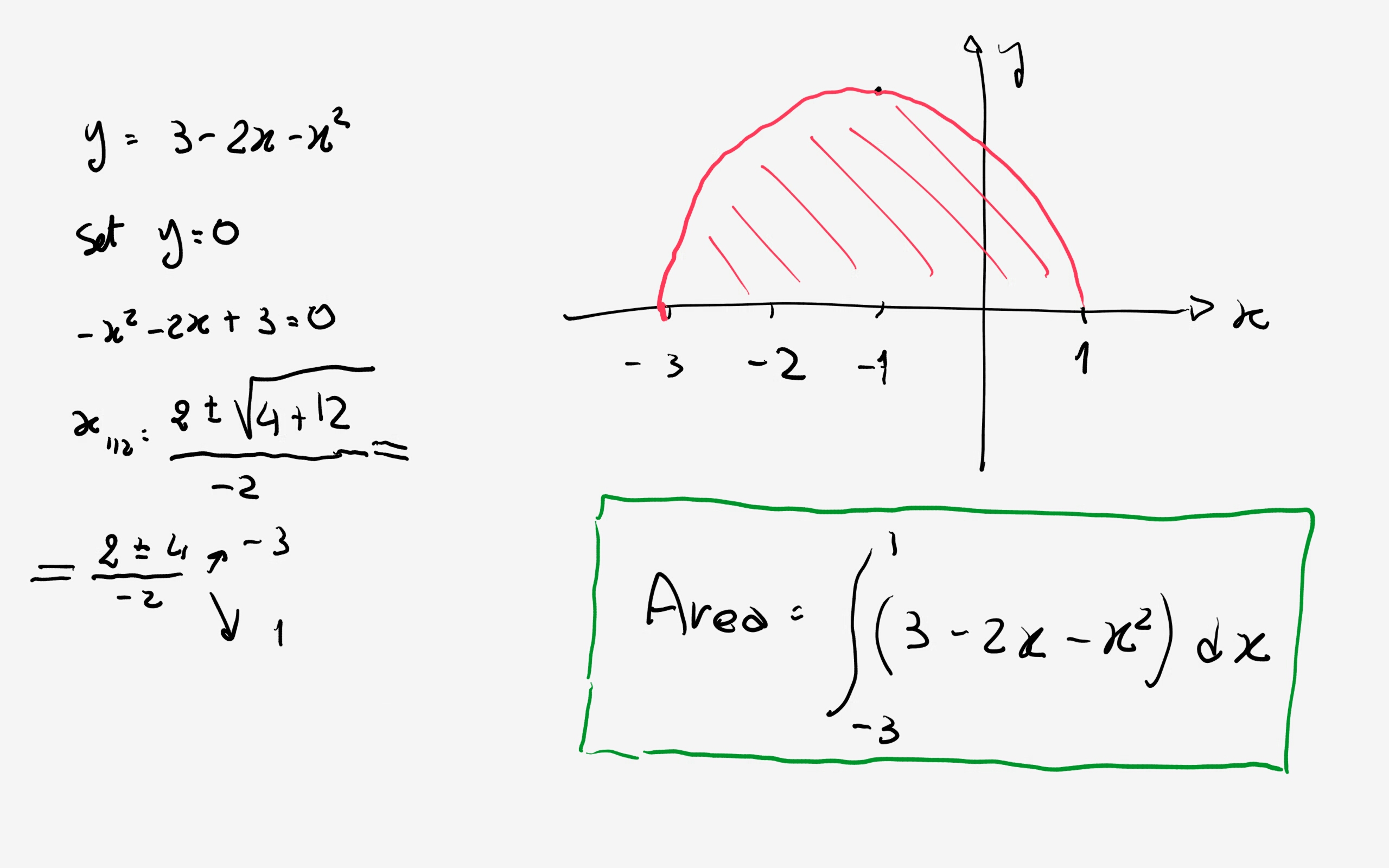



How Do You Find The Area Bounded By The Curve Y 3 2x X 2 And The X Axis Socratic
Find dy/dx x^3y^3=4xy Differentiate both sides of the equation Differentiate the left side of the equation Tap for more steps Differentiate Tap for more steps By the Sum Rule, the derivative of with respect to is Differentiate using the Power Rule which states that is whereI = e^(int P(x) dx) \ \ = exp(int \ 4x \ dx) \ \ = exp( 2x^2 ) \ \ = e^(2x^2) And if we multiply= y dy dt = −2x 3y x = et 3e2t y = et 6e2t 6 y = 1/(x2 c) is a one parameter family of solutions of the differential equation y′ 2xy2 = 0 Find a solution satisfying the initial condition y(1) = 2 7 y = c1cosx c2sinx is a two parameter family of solutions of the differential equation y′′ y = 0 Find a solution that also
Find the absolute maximum and minimum values of the function f on the set d f (x, y) = 4xy 2 − x 2 y 2 − xy 3 ;Compute answers using Wolfram's breakthrough technology & knowledgebase, relied on by millions of students & professionals For math, science, nutrition, historyXo y 400(15 3x 2) 5 f(x) = 3(e2x3 1)(xx 6 f(x) =3(5x32x 5)(Vx 2x) In Exercises 24 through 27, find all
Let R = {(x, y) x, y∈ N and x^2 4xy 3y^2 = 0 } , where N is the set of all natural numbers Then the relation R is Click here👆to get an answer to your question ️ Let R = {(x, y) x, y∈ N and x^2 4xy 3y^2 = 0 } , where N is the set of all natural numbers Then the relation R is Join / Login x^2 4 y^2 = 4 x y The mind is everything What you think you become Lord Buddha Excellent, Shovan Please note that substituting x by 2y in the expression asked we find the exact same answer, for sure Excellent, ShovanXx(x;y) = 4y x 2 yex f yy(x;y) = y 2 f xy(x;y) = 4x 3 ex f yx(x;y) = 4x 3 ex Note that f xy = f yx This will be the case for most functions, but there are some exceptions, such as when the second partial derivatives are not continuous 2For #40, the notation means to evaluate the second partial derivative, z xy at the point (1;2) 2
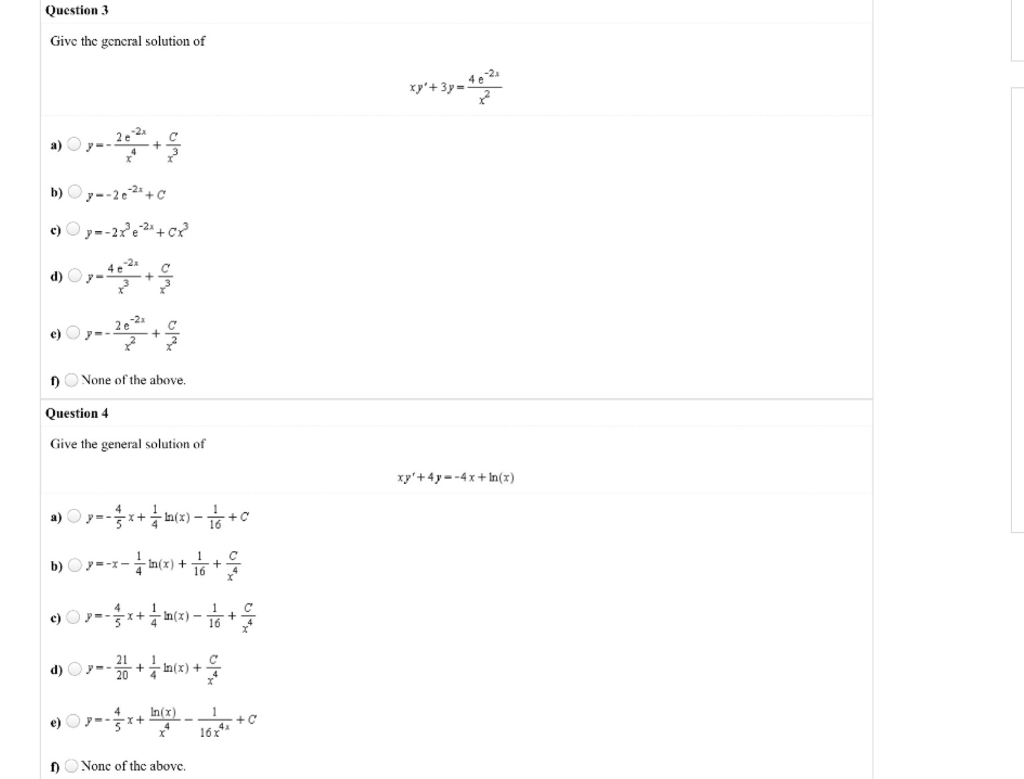



Solved Give The General Solution Of Xy 3y 4e 2x X 2 Chegg Com



2
342 Partials of f (x;y) where x and y are functions of two variables s and t We can use the same tree structure as above to compute partial derivatives in this case Suppose we have z= f(x;y), x= g(s;t), y= h(s;t) So, in this case, zis a function of sand tX, x^{2}, x^{2} ln(x), (0, \infty) Verify that the givenSee the answer See the answer See the answer done loading Show transcribed image text Expert Answer Who are the experts?
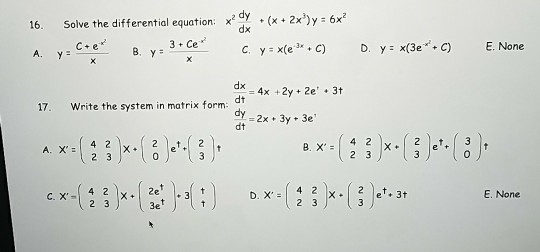



Solved Solve The Differential Equation X 2 Dy Dx X Chegg Com




2nd Order Linear Homogeneous Differential Equations 3 Video Khan Academy
Experts are tested by Chegg as specialists in their subject area We review their content and use your feedback to keep the quality highView Homework Solutions from PHYS 1 at Michigan State University CHAPTER 1 11 The function and its constraint are f (x, y ) = 3x2 4xy y 2 , (1) C (x, y ) = 3x y = 0 (2) According to theF(y,x 1,x 2)=0 where the partial derivatives are ∂F/∂x 1 = F x 1, ∂F/∂x 2 = F x 2 and ∂F/∂y = F yThis class of functions are known as implicit functions where F(y,x 1,x 2)=0implicity define y = y(x 1,x 2) What this means is that it is possible (theoretically) to rewrite to get y isolated and expressed as a function of x 1 and x 2



2



Ay D D8vuruw6m
3 (a) y' 4xy = x P(x) = 4x, Q(x) = x Ó Õ P(x) dx = x 2 K I=ex 2 K =ex 2 e K which you could call Ae x 2 but I'll just leave it e x 2 e K (doesn't make any difference) Iy = Ó Õ IQ e x 2 e K y= Ó Õ e x 2 e K xdx =eKÓ Õ e x 2 xdx The e K on both sides cancels outAnswer to Consider the differential equation x^{3}y''' 6x^{2}y'' 4xy' 4y = 0;D is the closed triangular region in the xyplane with vertices (0, 0), (0, 6), and (6, 0) 1 See answer
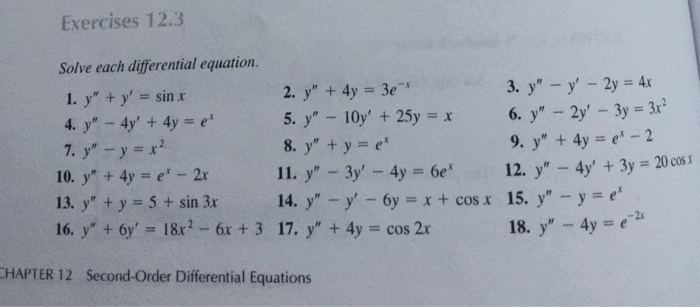



Solved Exercises 12 3 Solve Each Differential Equation 1 Chegg Com
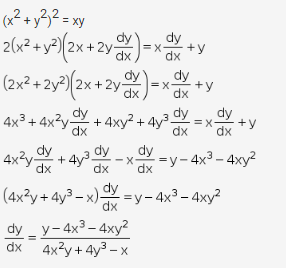



If X 2 Y 2 2 Xy Find Dy Dx Mention Each And Every Step Cbse Class 12 Learn Cbse Forum
Simplify (4xy)/(x^2y^2)(xy)/(xy) Since both terms are perfect squares , factor using the difference of squares formula , where and To write as a fraction with aFactor out the Greatest Common Factor (GCF), '4xy' 4xy(y x) = 0 Ignore the factor 4 Subproblem 1 Set the factor 'xy' equal to zero and attempt to solve Simplifying xy = 0 Solving xy = 0 Move all terms containing x to the left, all other terms to the rightSimilar expressions ((x^2)1)y'4xy=3 ((x^2)1)y'4xy=3




Xy Dy Dx Y 3e X 2 Youtube




Finding Gradient Vectors For Multivariable Functions Krista King Math Online Math Tutor



0 件のコメント:
コメントを投稿